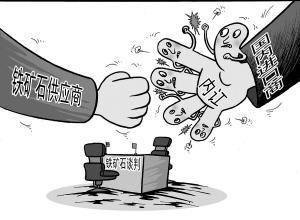Steel Pipe,Stainless Steel Pipe,Steel Tube Ningbo Qiyi Precision Metals Co., Ltd. , http://www.qiyi-metal.com Recently, domestic iron ore prices have rebounded by 20% from the low of $98/tonne in August 2012. Similarly, steel prices have also rebounded sharply from the September low, with rebar prices rising by 14% to 3,265 yuan/ton. For various reasons, the rebound in iron ore prices will continue in the fourth quarter.
Recently, domestic iron ore prices have rebounded by 20% from the low of $98/tonne in August 2012. Similarly, steel prices have also rebounded sharply from the September low, with rebar prices rising by 14% to 3,265 yuan/ton. For various reasons, the rebound in iron ore prices will continue in the fourth quarter.
Three seasonal positive factors. In the past three years, the output of steel in December will increase year-on-year. In the past decade, Chinese steel prices have been rising seasonally. From 2009 to 2011, China's iron ore imports will fall in October from the previous month, but in November and December imports are always 12%-28% higher than in October.
Chinese iron ore trader confidence improved. The spot price of iron ore fell below US$90/tonne and China’s announced infrastructure project valued at RMB 1 trillion boosted confidence. Buyers’ interest in the iron ore market has rekindled. Some iron ore traders estimate that 80%-90% of domestic iron ore mines (located in Hebei, Shandong, and Shanxi) have been discontinued because imported iron ore prices have fallen below $100/tonne. As the prices are expected to rebound, iron ore traders hope to increase their inventories for the first time in recent months (mostly at import prices of more than US$120/tonne).
Iron ore fills the reservoir. In the fourth quarter of 2010, when the inventories at the port reached approximately 70 million tons, steel stocks fell first, followed by stabilization of the iron and steel companies' profits, followed by a rise in iron ore imports and prices. As of October 12, 2012, iron ore port inventory has dropped to 90.8 million tons, the lowest level so far this year. China's imports in September increased by 4% from the previous quarter and increased by 7% year-on-year, indicating that there will be further recovery in demand and demand in the fourth quarter.
Steel stocks are declining. Chinese manufacturers’ inventory fell 11% in August from the previous month. While steel companies cut output, dealer stocks are also adjusted, while manufacturers’ inventory is high but has declined. After the National Day, the inventory of domestic distributors has dropped, and it has dropped by 14% since August. After infrastructure investment rebounded and steel producers accelerated production cuts, the price of long products rose. Correspondingly, stocks of long products declined, and inventories of rebar and rod steel dropped by 18% and 28% respectively since August.
Steel prices may rebound in the short term. The average daily output of crude steel in late September was 1.84 million tons, down by 0.7% from the previous month. After the National Day, the price of steel rose significantly, and then a slight correction was made. As the demand picks up, steel mills reduce production and social inventories decline, the construction steel price may rebound in the short term. Iron ore prices have rebounded by 22% from the September low. The recent rebound in steel prices may provide support for iron ore demand.
Policies will provide support for demand. On September 5, 2012, the National Development and Reform Commission approved 25 urban urban rail projects in the Mainland, with a total investment of about 840 billion yuan, of which 30% is owned by its own capital and 70% by **. One day later, the NDRC also approved three highway projects (over 2,000 kilometers in total) and seven port projects. It is estimated that the construction cost of China’s highways is approximately 70 million yuan to 110 million yuan/km, with a corresponding total investment of 200 billion yuan. The above news boosted the confidence of buyers and traders and increased inventory.
The profit rate of steel increased. After analyzing the relationship between the increase in gross profit per ton of the three major steel products (Hot Rolled Coil, rebar, and cold rolled coil), the output of key large and medium-sized steel companies, and the price of iron ore, experts pointed out that iron ore prices are low and profits There is usually a one to two months time lag between rate increases. The loss of steel seems to have bottomed out in the first week of September. The losses on September 14 have been reduced on the back of falling iron ore prices, low iron ore inventory prices and stable steel prices.
Price outlook. It is expected that the iron ore price will rebound in the fourth quarter of 2012, but in the long term it may be under pressure because it is expected that the increase in supply will pressure the price. It is expected that the price of iron ore (62% iron content, iron ore concentrate) will decrease from the average of US$122/ton in 2012 to US$119/ton in 2013 (down 3% YoY) and US$104/ton in 2014 (up year-on-year). Decline by 12%).
Demand outlook. It is expected that global demand will increase by 1% to 1.874 billion tons in 2012, and will increase by 5% to 2.07 billion tons in 2014, of which China's demand will slow down as the Chinese economy will transition from infrastructure construction to consumption promotion. It is expected that China's demand will grow at an annual compound annual growth rate of 6.3%, reaching 1.135 billion tons in 2014, accounting for 50% of global demand.